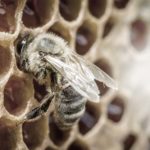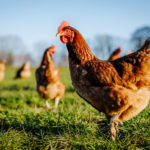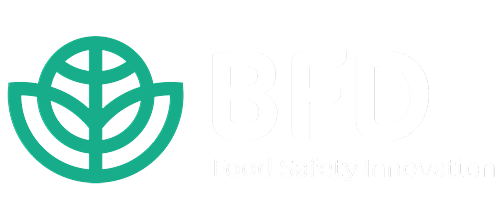
Nibbles: Day 1 – 12 Days of Food Safety
Day 1: Nibbles
12 Days of Food Safety
This year, as part of our Holiday message, BFD have decided to recognise the extraordinary lengths the Food Safety industry take to ensure our health and well-being over the festive season.
Tune in each week on our social media platforms to follow the BFD “12 Days of Food Safety” where we will be focusing on the most popular festive foods & drinks.
Nibbles
With the holiday season just five weeks away, many of us are starting to purchase snacks to enhance the festive season. During this time, people typically indulge in various holiday nibbles to complement the festive atmosphere. However, have you ever thought about the potential contaminants these snacks might have if not for the strict food safety testing and regulations in place? Below, we’ve outlined some common tasty nibbles to give you some festive ideas and we’ve highlighted some of the contaminants they could harbour without thorough food testing.
- Roasted Nuts: Almonds, walnuts, pecans, and chestnuts.
- Cheese and Crackers: A cheese platter with a selection of cheeses, crackers, and perhaps some dried fruits or chutney is a classic holiday nibble.
- Chocolates and Truffles: Assorted chocolates, truffles, and chocolate-covered nuts make for delightful treats during the holiday season.
- Mini Quiches or Tartlets: Bite-sized savoury pastry shells filled with a variety of ingredients like cheese, vegetables, or meats.
- Chips and Dip: A selection of crisps/chips or vegetable sticks served with different dips like spinach and artichoke dip, guacamole, or hummus.
Contamination & Health Threats
Nuts that have been roasted and grain utilised in the production of crackers, bread, and pastry undergo meticulous testing to detect the presence of mycotoxins. Mycotoxins are harmful substances produced by specific moulds or fungi that thrive on crops and food stuff. Mycotoxins can cause a variety of adverse health outcomes, posing serious health threats to both livestock and humans, ranging from acute poisoning (severe illness appearing quickly after food consumption) to long-term effects including cancer and immune deficiency. Of the several hundred identified mycotoxins, about a dozen stand in the spotlight due to the severe outcomes on human health and their occurrences in food. Peanuts, in particular, are highly prone to aflatoxin contamination, as moulds capable of producing aflatoxins can develop on peanuts both in the field and during storage 1.
Aflatoxicosis (as a result of the consumption of Aflatoxins) in the population is particularly prominent in tropical regions with moderate climates in Sub Saharan countries such as Kenya, Tanzania and Uganda 2. Approximately $670 million US dollars is lost each year because of rejected export trade due to aflatoxin contamination4. A few of the most serious aflatoxin outbreaks have been highlighted below.
- In 2004, there was an outbreak of acute aflatoxicosis in Kenya. It was one of the most unprecedented epidemics of human aflatoxin poisoning recorded in mycotoxin history. A total of 500 acute illness and 200 deaths in humans was reported 2.
- In 2016, there was an outbreak aflatoxicosis in the districts of Kiteto, Chemba, and Kondoa for three consecutive years since 2016. In 2019, 62 cases of aflatoxicosis resulted from a globally highest-ever recorded aflatoxin-B1-lysine that originated from a common source. To prevent future outbreaks, it is crucial to store and clean food crops safely before milling3.
- Approximately 26,000 Africans living in Sub-Saharan Africa die of liver cancer every year due to chronic aflatoxin exposure according to the International Food Policy Research Institute. At least 5,000 lives are lost every year in Nigeria due to aflatoxicosis 4.
- In May 2023 in Uganda, 1,700 tonnes of maize products, valued at $2 million US dollars returned positive results in above-normal levels of aflatoxins 5.
Overcoming the Burden
To overcome the social and economic burden of aflatoxin contamination, it is vital that key institutions (health, agricultural and governance sectors) work together to build a strategy to educate the public and provide the skills and tools to aid in controlling the situation 4. Fortunately, several strategies have been established to alleviate the aflatoxin burden, maintaining a consistent emphasis on enhancing food safety. Some of these initiatives are outlined below:
- In 2010, the Partnership for Aflatoxin Control in Africa was established at the 7th Comprehensive Africa Agriculture Development Program Partnership Platform conference in Yaoundé, Cameroon, and is leading the awareness efforts at both regional and national levels, quickly gaining the support of various governments 4.
- In 2018, Ghana inaugurated the National Steering Committee for Aflatoxin Control, with support from the Alliance for a Green Revolution in Africa. The Committee, coordinated by the Science and Technology Policy Research Institute in Ghana will, among other duties, assist in the development of the national policy and technical regulation for aflatoxin control 4.
- Africa Economic Cooperation Fund (KOAFEC), has launched a national programme to educate and sensitise stakeholders in the agriculture value chain on aflatoxins. Under the initiative, laboratories for testing aflatoxins will be established in farming communities to help in testing and grading before products enter the market 6.
- Without widely available and affordable diagnostic tools, health and economic risks of aflatoxicosis can be mitigated instead with early warning and predictive systems to inform agricultural production and postharvest management practices 4.
BFD Testing Panel
Biorex Food Diagnostics provides a comprehensive selection of mycotoxin kits that deliver quick and user-friendly tests. With two test kits specifically designed for Aflatoxin (Total Aflatoxins and Aflatoxin B1), our products enable sensitive detection at a significantly lower cost compared to expensive confirmatory testing through outsourcing. Reach out to us today for further details about any of our testing products.
| Product Description | Sample Type | Detection Limit | Assay Time |
| Aflatoxin B1 | Feed/Cereal
Dried Fruits Nuts |
1ppb
1ppb 1ppb |
15mins |
| Total Aflatoxins
(sum of B1, B2, G1, G2) |
Peanut
Animal Feed |
1ppb
2ppb |
35mins |
Check out the infographic below for a breakdown of the BFD 12 Days of Food Safety!

References
- World Health Organisation (WHO). Mycotoxins. https://www.who.int/news-room/fact-sheets/detail/mycotoxins (accessed 15 November 2023).
- Omara T, Kiprop AK, Wangila P, Wacoo AP, Kagoya S, et al. The Scourge of Aflatoxins in Kenya: A 60-Year Review (1960 to 2020). Journal of Food Quality 2021; 2021(8899839). https://www.hindawi.com/journals/jfq/2021/8899839/ (accessed 15 November 2023).
- Kinyenje E, Kinyenje R, Mohamed M, Mwafulango A, Eliakimu E, et al. Aflatoxicosis outbreak and its associated factors in Kiteto, Chemba and Kondoa Districts, Tanzania. PLOS Global Public Health 2023; 3(8): https://www.ncbi.nlm.nih.gov/pmc/articles/PMC10409262/ (accessed 17 November 2023).
- Keizire B. Time for multiple sectors to fight aflatoxin in Africa. https://www.scidev.net/sub-saharan-africa/opinions/time-for-multiple-sectors-to-fight-aflatoxin-in-africa/ (accessed 15 November 2023).
- Food Safety Africa. Uganda to destroy 1,700 tonnes of maize consignment after failing EAC aflatoxin test. https://www.foodsafetyafrica.net/uganda-to-destroy-1700-tonnes-of-maize-consignment-after-failing-eac-aflatoxin-test/ (accessed 17 November 2023).
- Bako E. Over 40% of grains contain unacceptable levels of aflatoxin contamination. https://thebftonline.com/2023/10/10/over-40-of-grains-contain-unacceptable-levels-of-aflatoxin-contamination/ (accessed 17 November 2023).







